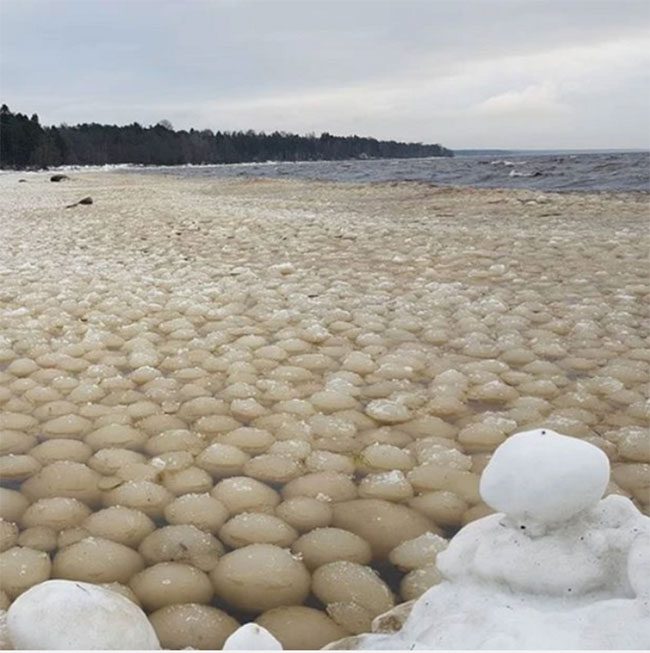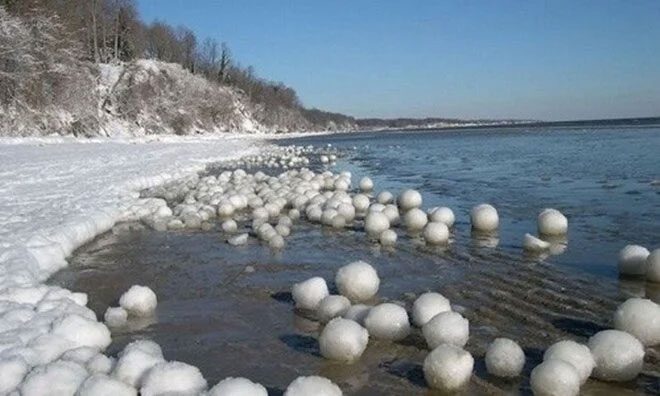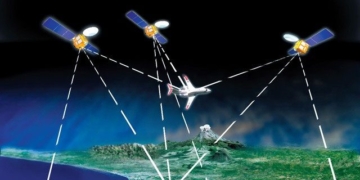The sight of thousands of snowballs drifting on the sea captivates attention.
In 2017, Yuryi Shahov happened to capture the mesmerizing scene of thousands of snowballs floating on the surface of the Gulf of Finland, in Northwest Russia. These snowballs were relatively uniform in size and appeared cloudy white.
This peculiar phenomenon was so striking that, at first glance, one might think the Gulf was being used as a film set for some sci-fi blockbuster or that someone had gone to the trouble of sculpting snowballs just to play a prank.
This unique sight was shared by Yuryi on social media, drawing significant attention.

The sight of thousands of snowballs drifting on the water has attracted the attention of many. (Photo: Dailymail).
Many were astonished by this unusual natural phenomenon. Some locals came to see the snowballs for themselves.
Some suggested bizarre theories, claiming they were whale eggs, despite the fact that whales give live birth, not eggs. The origin of these snowballs remained a mystery. Most people were concerned, fearing it could be an environmental pollution issue that might affect the local ecosystem.
Later, Ilya Leukhin, a local paleobiologist, stepped in to explain the phenomenon. Ilya noted that these snowballs, measuring up to 17 cm in diameter, could have formed from oil spills.
According to his explanation, oil on the sea surface adhered to floating ice blocks. Gradually, these ice blocks broke apart, creating countless large and small ice spheres in the water that were worn down by the waves into relatively uniform shapes.

Many scientists believe that temperature, ice structure, and ocean currents contributed to the formation of this phenomenon. (Photo: Dailymail)
Since then, many explanations have been proposed that sound reasonable, but no one has accurately clarified what actually happened.


















































